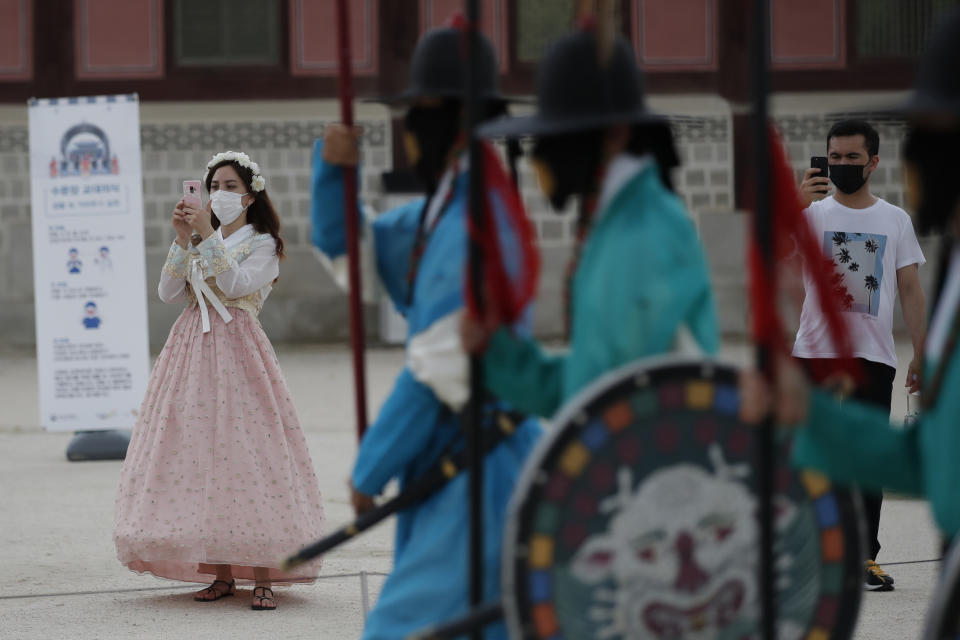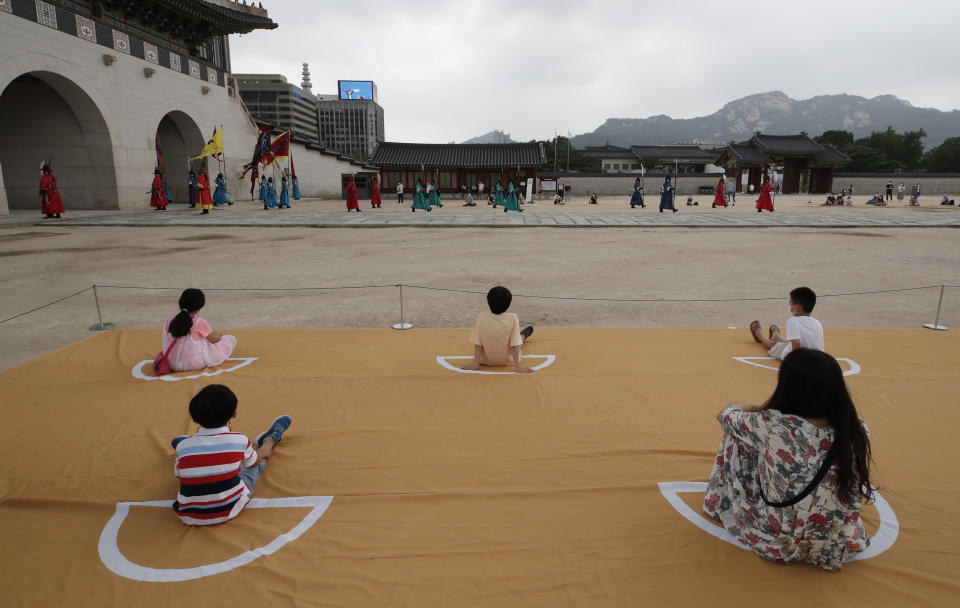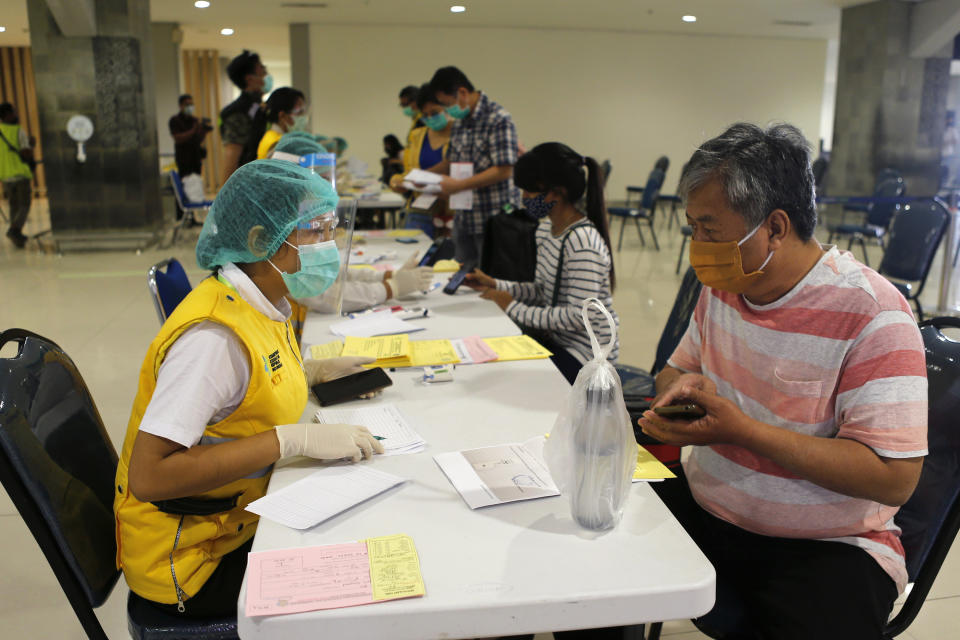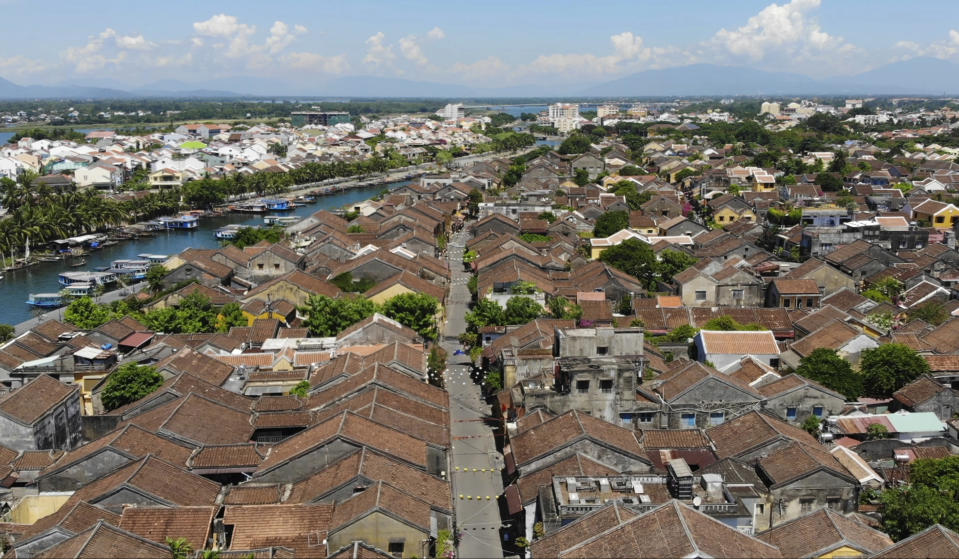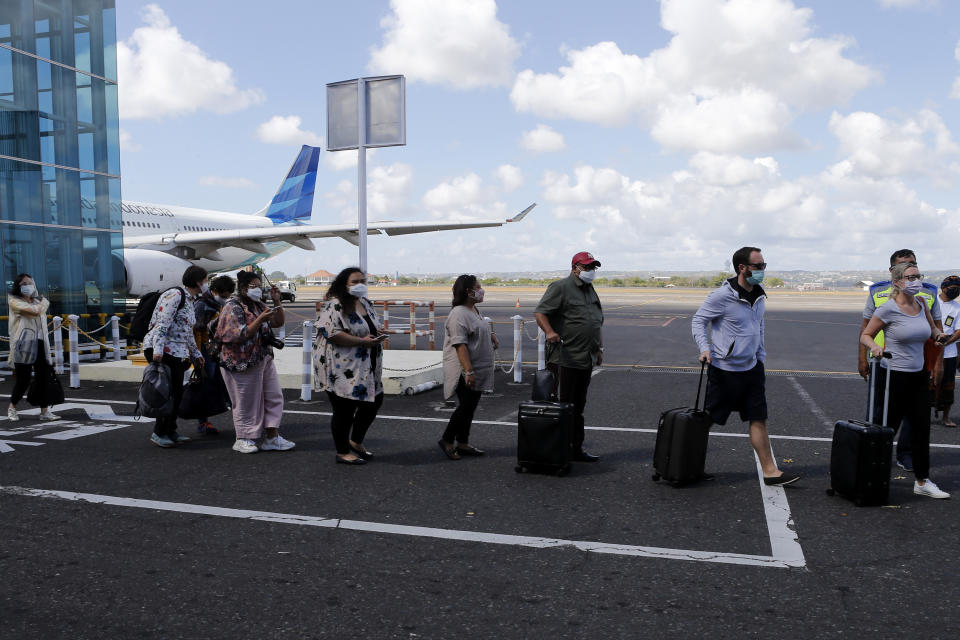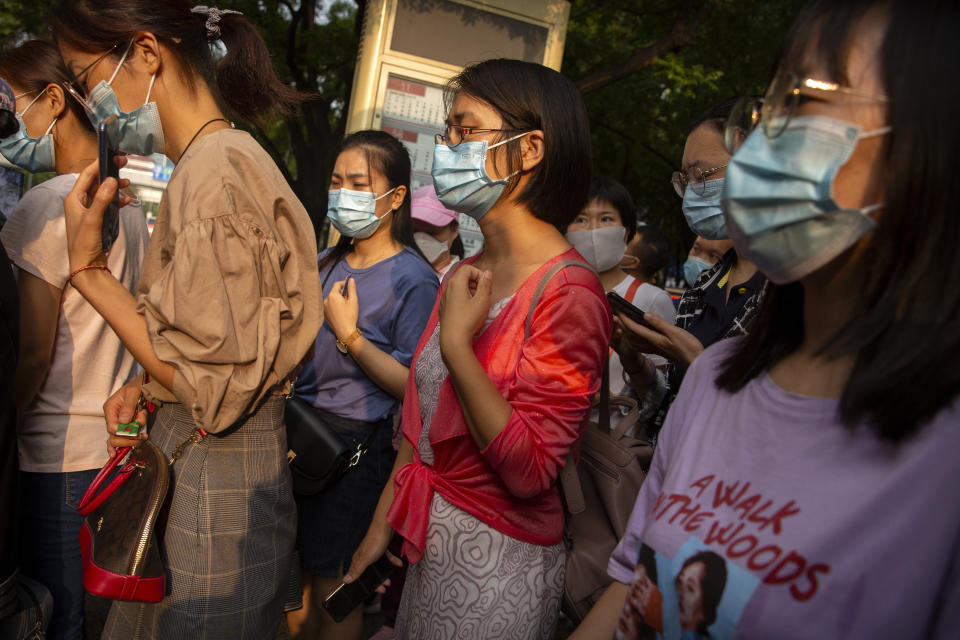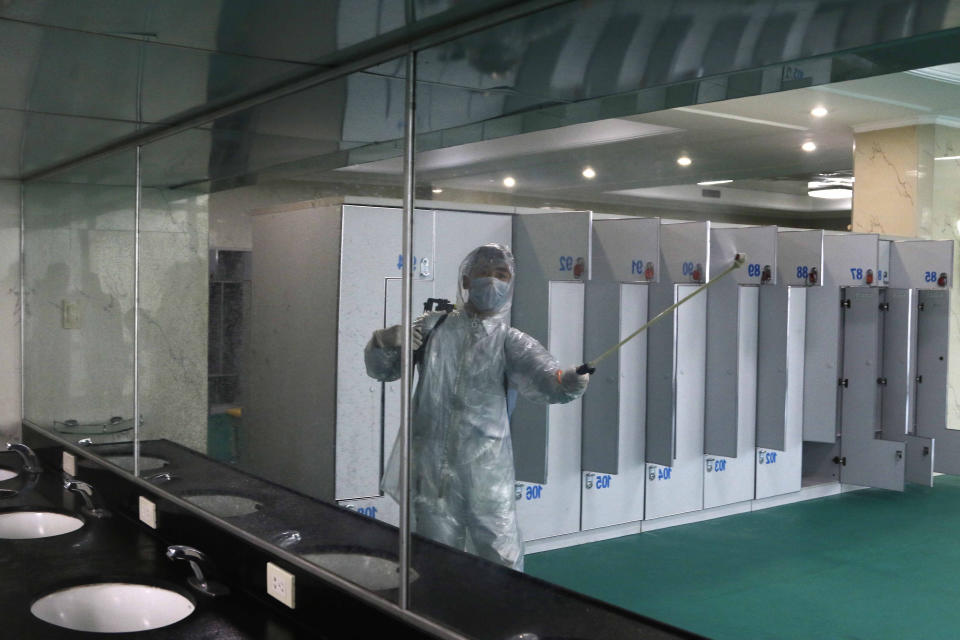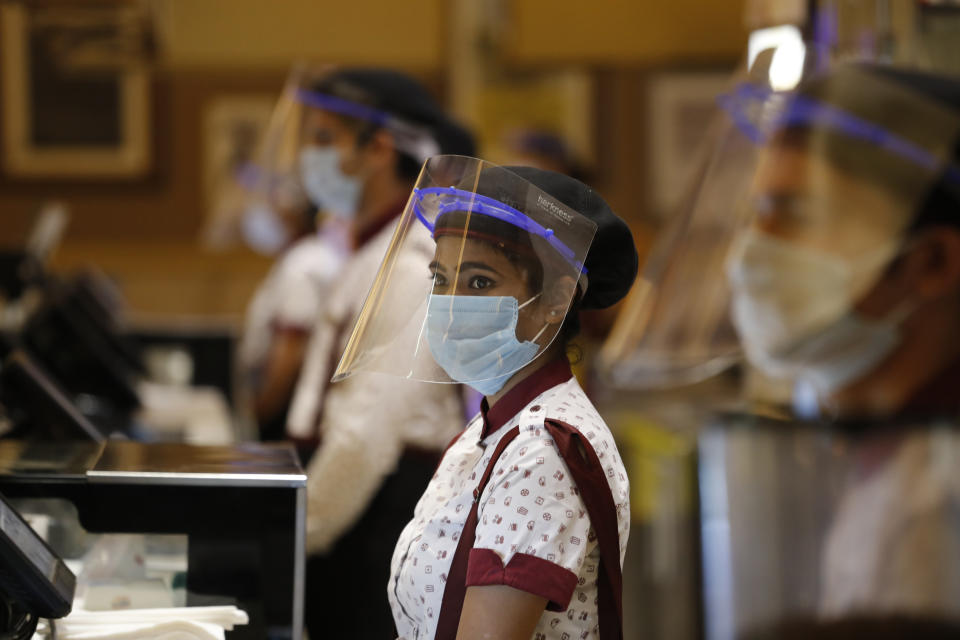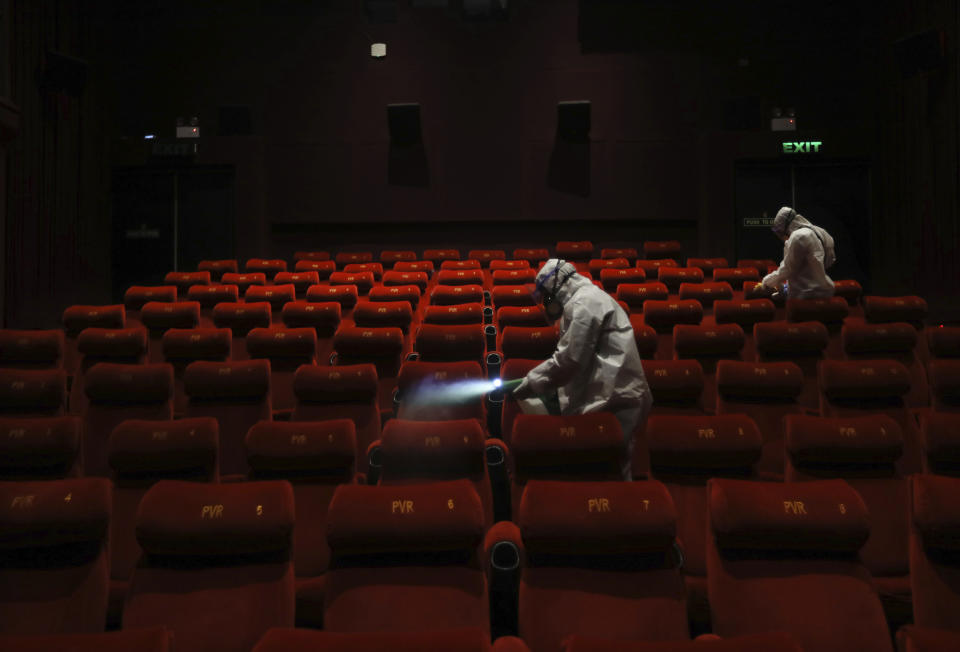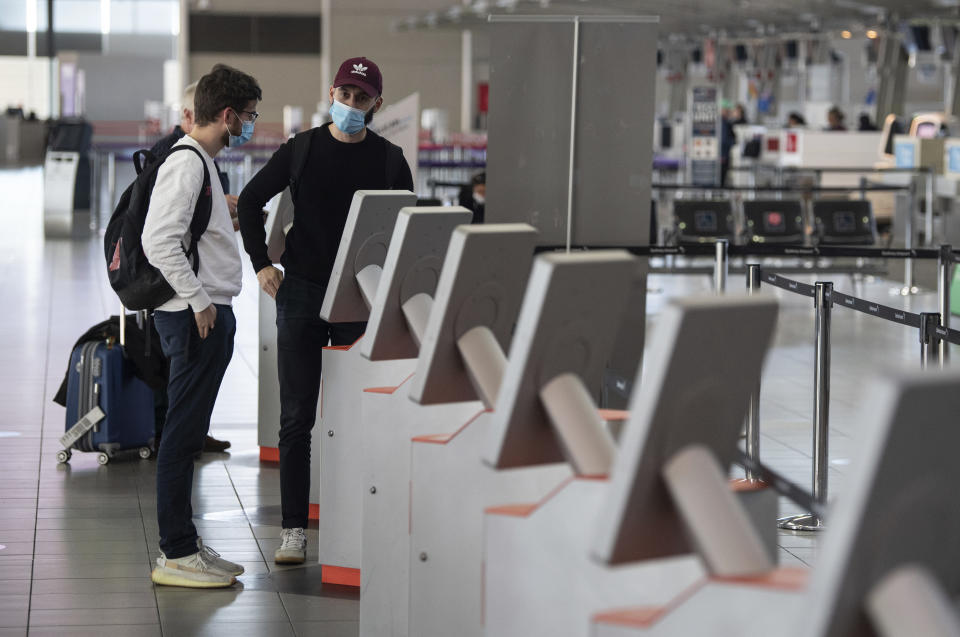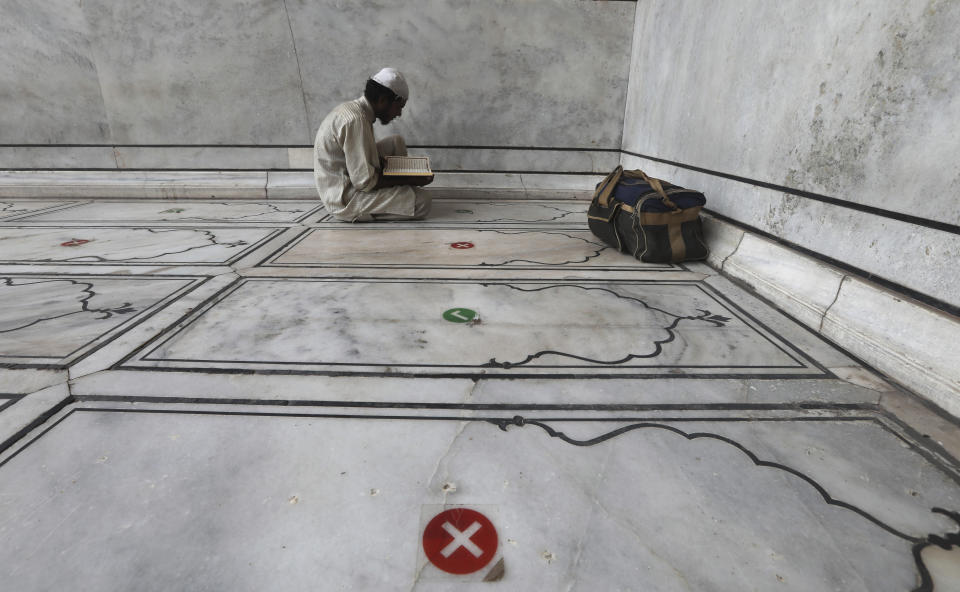Asia Today: India, Philippines ease rules; Bali reopens
NEW DELHI (AP) — India added another record surge in virus cases Friday as the government decided to lift a nighttime curfew that was in force since March.
The 55,079 new cases in the past 24 hours took India’s total to 1,638,871. The Health Ministry on Friday also reported 779 deaths in the past 24 hours, taking fatalities to 35,747.
The actual numbers, like elsewhere in the world, are thought to be far higher due to a number of reasons including limited testing.
The nighttime curfew will be lifted from Saturday and yoga institutes and gyms can reopen Wednesday, according to the Home Ministry. The government also removed interstate restrictions on movement of people or goods.
The government also decided to reopen hotels in the Indian capital which had been used as quarantine facilities. After peaking at nearly 3,500 new cases per day earlier this month, New Delhi's numbers have dropped to around 1,000 cases a day.
After the nationwide lockdown was largely lifted, lockdowns now remain only in areas that are hot spots of infection and are decided by state and territory governments.
Metro service, cinemas, swimming pools, entertainment parks, bars, theaters, auditoriums and other social gathering places will remain closed until Aug. 31, the ministry said.
In other developments in the Asia-Pacific region:
— Indonesia’s resort island of Bali reopened to domestic tourists Friday after an almost four-month lockdown. Visitors will face stringent rules in hotels, restaurants and on beaches. New foreign arrivals will be allowed on the island beginning Sept. 11. Tourism is the main source of income for the island, and the pandemic has caused a dive in the number of visitors.
— Vietnam’s health ministry says it has confirmed more than 100 cases linked to a Da Nang hospital after an initial case surfaced last week. The outbreak centered in the popular beach destination is Vietnam’s first in more than three months. The city was put under lockdown on Tuesday and testing and business restrictions increased in other areas. Da Nang was setting up a makeshift hospital in a sports auditorium, and doctors have been mobilized from other cities to help.
— Philippine President Rodrigo Duterte further relaxed quarantine restrictions and will shift the virus response to localized lockdowns where infections surge. Central Cebu city had been the last major area under a lockdown. The Department of Health reported a record daily tally of new and old COVID-19 cases on Friday at 4,063, bringing total infections to more than 93,300, including more than 2,000 deaths. Despite such spikes, the government has been under pressure to open the economy more widely.
— Nepal is opening its Himalayan peaks, hoping to bring back Western climbers unable to come during the spring mountaineering season. Both the government and expedition workers and businesses are hoping foreign climbers who bring some $300 million annually to Nepal will return during the autumn climbing season that begins in September. Nepal is opening to commercial flights from August. Rudra Singh Tamang, director general of Nepal’s tourism department, said mandatory test reports and quarantines when needed are among the measures being used to ensure tourism returns safely.
— Victoria state’s leader warned that tougher pandemic restrictions could be looming after Australia’s coronavirus hot spot reported its second-highest daily COVID-19 count. State capital Melbourne and a neighboring semi-rural district are over halfway through a six-week lockdown. Victoria Premier Daniel Andrews said the lockdown was being analyzed to determine the next steps “but it is important that all of us acknowledge that these numbers are still far too high.” Victoria on Friday reported 627 new infections and eight deaths.
— China is tightening travel restrictions in the capital of Xinjiang, where 112 new cases were reported Friday. People arriving in Urumqi from high-risk places must undergo a two-week quarantine. Others most show proof of good health. Locals should stay in the city or show proof of health to be allowed to leave. Almost all regions in China are designated low and medium risk except for the northeastern port city of Dalian, which is high risk due to an ongoing but smaller outbreak.
— Beijing will send personnel to Hong Kong to help with coronavirus testing and the building of treatment centers, as the semi-autonomous city faces its worst outbreak of the virus, China's Hong Kong and Macao Affairs Office said Friday. Hong Kong reported a total of 3,273 cases as of Friday, including 27 deaths. The city had gone weeks without any known locally transmitted cases until the beginning of July, when an outbreak began. The total number of infections has more than doubled since July 1. Hong Kong leader Carrie Lam said Tuesday that the city is on the verge of large-scale community outbreak which could lead to a collapse of its hospital system. The city has tightened social distancing measures, banning dine-in eating at restaurants after 6 p.m. and restricting public gatherings to two people. Lam on Friday also announced the postponing of legislative elections for one year because of the outbreak.
— Japanese Prime Minister Shinzo Abe expressed alarm Friday about a jump in coronavirus cases as the nation struggles to balance economic growth and disease prevention. “We are very carefully watching the surge in infections. First, we need to step up testing,” he said. New infections in Tokyo, Osaka and Nagoya have risen to new highs. Abe’s government has faced criticism for going ahead with a tourism promotion program aimed at supporting the badly hit tourism industry. Meanwhile, the governor of the southern Japanese island of Okinawa, Denny Tamaki, issued its own “emergency declaration," citing an “explosive growth” in cases after a record 71 new infections were confirmed Friday. The national government has stopped short of declaring a new emergency after an earlier one was lifted in May.—

